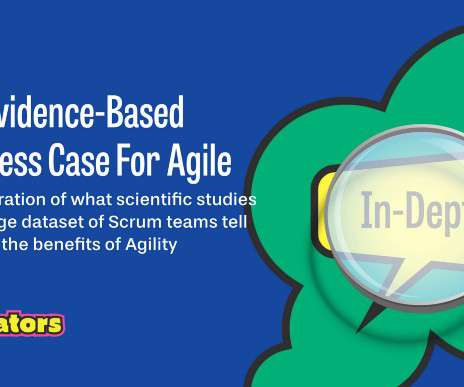In-Depth: The Evidence-Based Business Case For Agile
Scrum.org
OCTOBER 19, 2022
For this analysis, we use the evaluations of 857 stakeholders for 241 teams. For this, we used a simple statistical technique called multiple regression analysis. Each dot represents a team: A scatterplot and the results from a regression analysis may not be intuitive for many readers, especially those not familiar with statistics.














Let's personalize your content